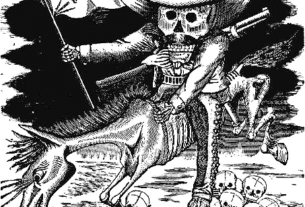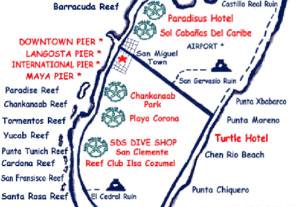A Woman’s Perspective on Living in Mexico
re you curious about the title? I thought I’d share my last month with you. Two of my lifetime friends came down for a visit. They stayed ten days and we took a four-day whirlwind tour through Patzcuaro, Tzintzuntzan, Santa Clara del Cobre and Morelia in the state of Michoacan.
This was my first visit to Santa Clara del Cobre, the copper capital of Mexico. It’s a very old, quaint village, chock a block full of every copper product you could imagine. Most stores had their less expensive, “come hither” products on tables outside to draw us into the store. We aren’t big copper fans, but we each brought home a few souvenirs. We had an excellent lunch at a roadside restaurant.
The trip occurred during the horrible hurricanes and flooding on the East Coast of Mexico, but we only had half an hour of rain that far inland. We’ve been very lucky in central Mexico to have escaped the natural disasters pounding many parts of our country this year.
In Patzcuaro, one of my friends bought two large wood carvings of horses which she’ll set behind her sofa under a large glass table top. Patzcuaro is famous for its wood carved furniture. On my last trip there, I bought a mirror frame which barely fit in my car. This time I took my Explorer so we had lots of room for treasures. My friends purchased many beautiful woolen capes to take home as Christmas gifts. Weaving from Patzcuaro is highly regarded throughout the country as are hand- painted black enamel products.
Tzintzuntzan (tsin-soon-san) is just half an hour’s ride from Patzcuaro. We admired their wonderful hand painted pottery, oohed and aahed at the intricately carved wooden beams used both vertically and horizontally around entrances and stocked up on Christmas ornaments made from straw.
On the last day, we headed to Morelia, about an hour further. In the town center there was no parking, so we drove a bit out of town and took a taxi back in. Morelia has a wonderful colonial feeling about it. It’s a big city of one million, but the way it’s laid out, it doesn’t feel that big. The streets are clean. There are many parks and plazas and grand old cathedrals.
We had only a few hours, so we ate first. Carolina discovered Crepes Suzette on the menu and reminded me of Sally in the famous restaurant scene in “When Harry met Sally.” After a scrumptious meal, we walked over to the Market of the Sweets.
My favorite candy is a small mound of coconut strips. It tastes rather like a macaroon, but better. The market is huge. We bought some leather goods and I stumbled onto a great find.
Thousands of miniature leather boots and shoes were made into key rings. “Look!” I said to my friends. “Shoes for my dolls.” The boots came filled with cigarette lighters, but I negotiated with one of the stall owners, who said he was the maker of the boots and shoes, to sell them to me without the key rings and lighters.
His wholesale prices weren’t enough less than the retail, so I knew he was buying them from someone else. We bought many samples though. The detail work in them is amazing. I’m talking shoes and boots with a sole about two inches long.
Doll shoes? I knew you’d ask. At least, I hoped you would. Everyone new to this area, or even contemplating retirement asks, “But, what do you do with all your time?” They don’t understand when I say, “There just isn’t enough time. I can’t imagine how I ever fit work into my schedule!”
During a trip to the States earlier in the year, I spent some time in Borders Book Store. I always do. I browsed in the crafts department and fell in love with this book called “The Anatomy of a Doll” by Susanna Oroyan. What wonderful dolls. Not dolls that kids play with, but artists’ dolls… magnificent sculptures in cloth, clay and wood. Some so human looking, you couldn’t believe they were dolls; others mere whimsical delights that only smacked of human form. Each had a story to tell. These dolls sell to collectors for hundreds and thousands of dollars each, depending on the skill and fame of the artist.
“I want to make those,” I said to myself. I bought the book and when I returned home, I tried. Mine didn’t look like theirs. Not even close. During my grief after Pierre was killed, two friends from Puerto Vallarta stayed at my house. They said, “Go. Do something fun. We’ll stay with Maurice.”
I got on the Internet and found a doll making class in San Diego. Five days of learning how to needle sculpt doll heads in fabric. I went. I was hooked.
Returning to Mexico I spent many days in Guadalajara looking for non-existent supplies. Five inch needles, polymer clay, doll eyes, small print cotton fabrics, doe suede, and mohair. I now know where all the notions and fabric stores are, and there are many. They are huge. Friends started going through their sewing stash and bringing me fabrics, notions, and the unique things I needed that I couldn’t get here.
I became a dollaholic. I’ve been a lonely dollaholic though, because until last week, I hadn’t found anyone interested in making dolls. Then (and this takes us back to my story), my two friends came to visit. They said, “We want to spend a day making dolls. You teach us.”
We did. They made two of the most incredible dolls. Each absolutely reflected the personality of the maker. Same pattern. Different interpretations. It took us a day and a half. One doll’s costume was accented by a black leather vest, a pair of those miniature leather boots and a small beaded purse made by the local Huichol Indians. Cayenne throws her bright red hair back in the air like a woman with an attitude.
The other is softer. Sweet. She’s called Champagne and reminds me of a 1960s love child.
It was great fun.
This week I headed to Leon, the leather capital of Mexico which is a three hour drive from Ajijic and is located in the state of Guanajuato. Karen, who wrote last month’s article, accompanied me and another friend. My mission was to find the manufacturers of those tiny boots and shoes.
They were hanging all over, but no one knew (or would tell me) where they were made. I finally found a wholesaler who ordered the shoes and boots with holes and added the key chains and lighters to them. Unfortunately, they only make two styles. They wouldn’t tell me the name of the manufacturer either. I’ll go again with a Mexican and see if I can do better.
The ones I did buy, I am making available to my on-line doll groups. I’m “virtually” not alone, and who knows, maybe I’ll make a little business out of this. As long as it remains fun and doesn’t turn into work!
Leon is another huge city. We loved it. Not only were there thousands of shoe and purse stores, there were belts, saddles, leather jackets and every leather product you could imagine. Even whips! You wonder how they could all stay in business, but eighty percent of their business is export. I can’t imagine wearing leather jackets in this weather!
The city center is beautiful. Located around two major plazas banked with trees trimmed to look like those little chocolate mound candies with cherries and liquor inside, the town really comes alive at night. Stores are open until 9 p.m. Wandering the streets, visiting with neighbors and enjoying the beautiful weather is a social pasttime of the Leonites. We didn’t see any other gringos.
Without hotel reservations, we discovered after checking four places which were filled, that there was a computer conference in town. Those hotels, a Holiday Inn and Fiesta, were $90 and $100 per night–U.S. dollars. We found a hotel on the outskirts, spent one night there, paid $15 per person and treated ourselves to a sumptuous Italian dinner with our savings.
Back home the next evening, I removed key rings, took digital photos of the shoes and boots and prepared to load them onto the Internet.
Today feels like the first day of fall. I had to put on a long sleeved shirt this morning. The mountains are turning brown now, after the rainy season, but the air is fresh and invigorating. It’s a wonderful life.


